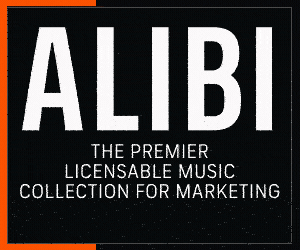Five mistakes to avoid when purchasing broadcast equipment

Subscribe to NewscastStudio for the latest news, project case studies and product announcements in broadcast technology, creative design and engineering delivered to your inbox.
Navigating the labyrinth of broadcast equipment for studio production can be a daunting task for even the most seasoned industry veterans. With rapidly evolving technology, a multitude of brands and a marketplace flooded with options, making the right choice requires a careful and considered approach.
We’ll delve into five common mistakes to avoid when purchasing broadcast equipment. These insights will arm you with the knowledge to make informed decisions and ensure your investment delivers optimal value and performance.
Mistake #1: Disregarding future-proofing
The pace at which broadcasting technology evolves can be dizzying. While it might be tempting to opt for a bargain, this can often mean settling for older equipment that may soon become obsolete. Future-proofing is a vital aspect of any broadcast equipment purchase. This means considering how well the equipment can adapt to future advancements, including software updates, compatibility with upcoming standards, and scalability.
When purchasing, ensure that the equipment has upgrade paths, whether through software updates or hardware expansions. Avoid getting locked into a technology that has a limited lifespan or can’t adapt to new protocols or standards. It might seem like a significant investment upfront, but it pays off in the long run by avoiding frequent replacements and ensuring compatibility with future innovations.
Mistake #2: Overlooking the total cost of ownership
When assessing the price of a piece of equipment, it’s easy to focus on the upfront cost and ignore the total cost of ownership (TCO). TCO includes not just the purchase price, but also the ongoing costs of operation, maintenance, and even decommissioning.
Before making a purchase, consider factors such as power consumption, maintenance costs, licensing fees, and potential repair costs. High-end equipment might come with higher maintenance costs or require expensive proprietary accessories. On the other hand, cheaper equipment might consume more power over time or need frequent repairs, adding to the operational cost. A thorough analysis of TCO can help you choose equipment that offers the best value over its lifespan.
Mistake #3: Neglecting interoperability
With broadcast systems often comprising a myriad of devices from various manufacturers, interoperability is key. The last thing you want is to invest in a piece of equipment that doesn’t play well with others in your ecosystem.
Interoperability is not just about ensuring that your new equipment can connect with the old. It’s about ensuring that all components of your broadcast infrastructure can communicate effectively in a succinct workflow. It’s about creating a cohesive, efficient, and adaptable system.
When adding a new piece of equipment to your setup, evaluating its compatibility with the existing ecosystem is important. This includes considering the interfaces it uses, the protocols it supports, and how it can be integrated into your existing workflows.
Furthermore, consider the future. With the continuous evolution of broadcast technology, new standards and protocols are frequently introduced. Ensure that your new purchase supports widely used and upcoming standards – from NDI to SMPTE 2110.
In a multi-vendor environment, interoperability also ensures that products from different manufacturers can work together without a lot of extra headaches.
Mistake #4: Failing to consider usability and training
While it’s crucial to focus on technical specifications, usability is an equally important factor that’s often overlooked.
Highly technical specifications and advanced features are of little value if the equipment is so complicated that it disrupts the workflow, slows down operations or leads to mistakes. A piece of broadcast equipment should have a user-friendly interface, intuitive controls, and clear instructions.
Moreover, the cost of training your team on how to use new equipment is an often overlooked expense. Complex equipment may require extensive training sessions, which can be costly and time-consuming. It’s not just the direct costs of the training sessions themselves, but also the indirect costs, such as lost productivity during the training period. When assessing usability, it’s also beneficial to consider the feedback and reviews from other users. This can give you valuable insights into the equipment’s ease of use in real-world scenarios, potential issues, and associated learning curves.
Another aspect to consider is how well the new equipment fits into your existing workflows. Does it enhance the workflow or require a complete overhaul of your processes? The latter could significantly increase the time to integrate the new equipment into your operations.
Mistake #5: Ignoring post-sale support
Finally, it’s crucial to consider what happens after the purchase. Is there a robust customer support system in place? Does the vendor offer reliable warranty terms? What about after-sales service and technical support?
These factors are critical, especially when dealing with complex broadcast equipment. A vendor with a strong support system can offer invaluable assistance in case of technical issues, saving you time and frustration. Additionally, favorable warranty terms can protect your investment and provide peace of mind.
The world of broadcast technology is a dynamic and constantly evolving landscape. Decisions made in the equipment acquisition process can significantly impact the quality of your broadcast operations, the efficiency of your team and the overall success of your production.
Future-proofing, total cost of ownership, interoperability, usability, and post-sale support are all essential considerations that can make or break the value of your investment. These are not standalone factors but interconnected aspects that shape the effectiveness and longevity of your equipment.
So, as you navigate the complex terrain of broadcast equipment purchase, keep these insights at the forefront. Arm yourself with the knowledge to make informed decisions that ensure optimal value, performance and longevity from your investment. After all, in the world of broadcasting, the quality of your equipment is intrinsically linked to the quality of your output.
Subscribe to NewscastStudio for the latest news, project case studies and product announcements in broadcast technology, creative design and engineering delivered to your inbox.




tags
Broadcast Workflow
categories
Broadcast Equipment, Featured, Thought Leadership, Voices